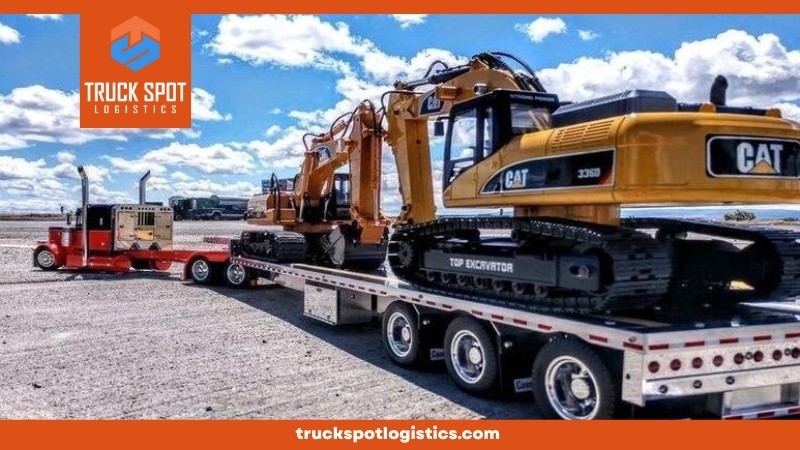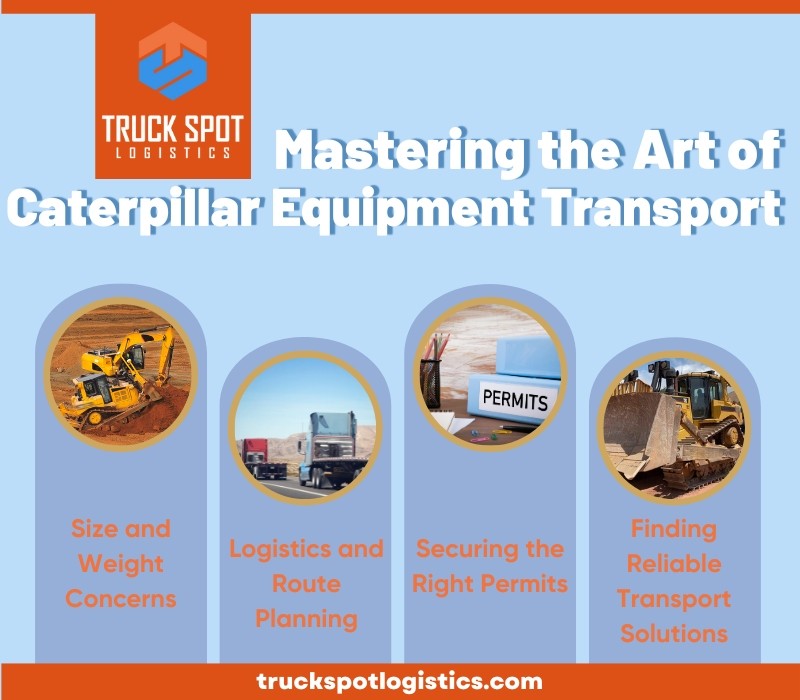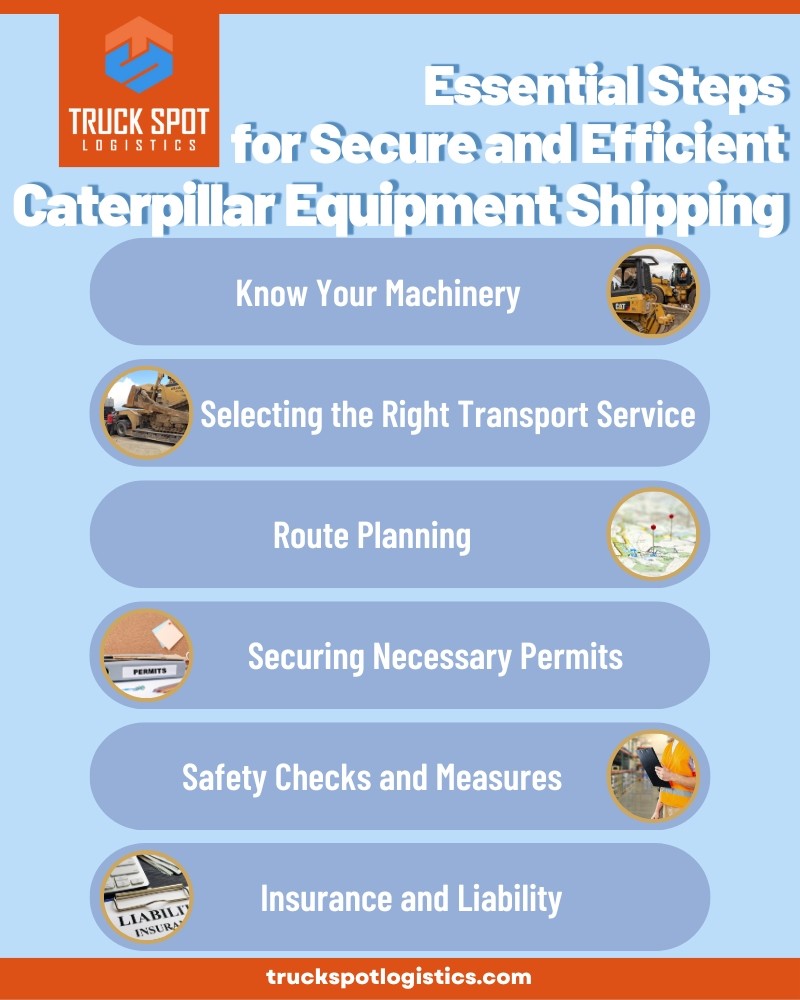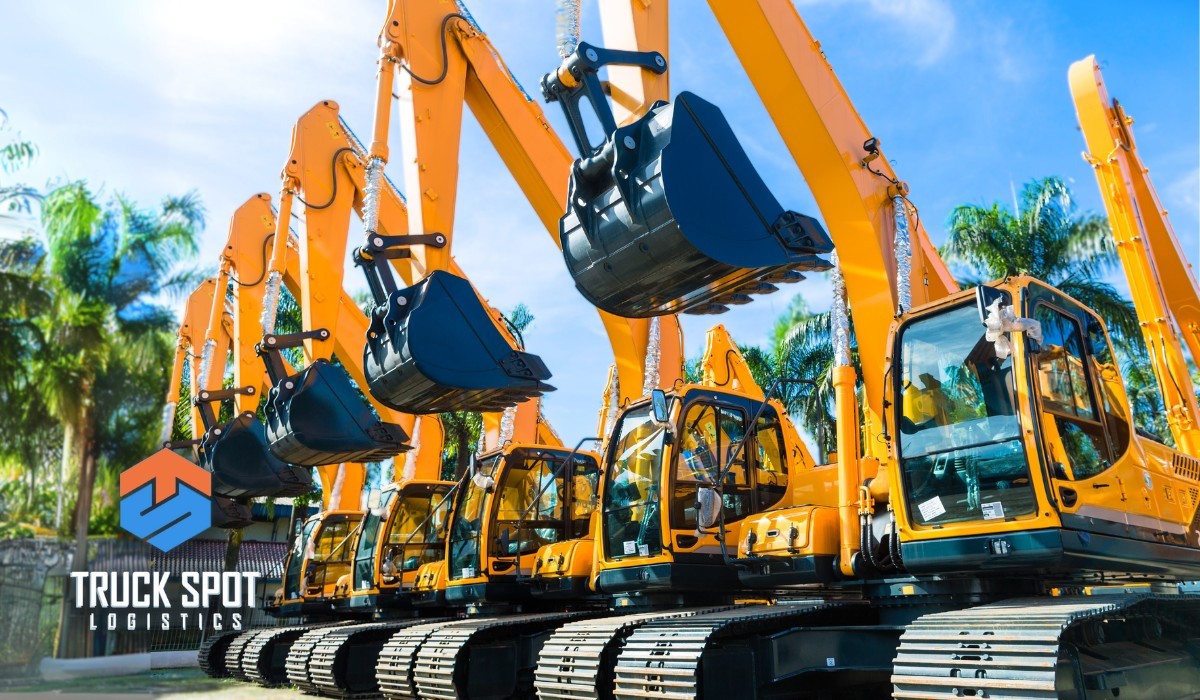When it comes to transporting Caterpillar construction equipment, the stakes are high and the challenges unique. This comprehensive guide is tailored to assist you in navigating the complexities of Caterpillar shipping, ensuring your heavy machinery reaches its destination without a hitch. From understanding the nuances of different Caterpillar machines names to securing the best rates through a reliable Caterpillar load board, we cover it all.
At TruckSpot Logistics, we specialize in comparing shipping quotes from top auto transport companies, saving you time and money in your Caterpillar transport endeavors. Designed for clarity and ease of understanding, this article is your one-stop resource for all things related to Caterpillar transport.
Understanding Caterpillar Transport

Transporting Caterpillar construction equipment requires specialized knowledge due to the diversity of the machinery. Each Caterpillar model, from bulldozers like the D6 to excavators such as the 336, has unique transport needs based on its size and weight.
Key Considerations
Before arranging Caterpillar shipping, it’s crucial to understand the specifics of the equipment. This includes identifying the right type of trailer and planning the route considering any road restrictions for oversized loads.
Regulations and Permits
Caterpillar transport often involves navigating various state and federal regulations due to the oversized nature of the machinery. Ensuring compliance with these regulations, as outlined by sources like the Federal Motor Carrier Safety Administration (FMCSA), is essential to avoid legal issues.
Leveraging Load Boards
For efficient and cost-effective Caterpillar transport, using a Caterpillar load board can be beneficial. Platforms like TruckSpot Logistics provide access to multiple shipping quotes, helping you find the most suitable transport option for your Caterpillar equipment.
Understanding the specifics of your Caterpillar machinery, adhering to transport regulations, and utilizing resources like load boards are key to ensuring a smooth transport process.
Key Challenges in Caterpillar Transport
Transporting Caterpillar construction equipment is a complex task, fraught with unique challenges that require specific solutions. Whether it’s a Caterpillar D6 Bulldozer or a 950M Wheel Loader, each piece of equipment presents its own set of logistical hurdles.

Size and Weight Concerns
One of the most significant challenges in Caterpillar transport is the sheer size and weight of the machinery. These oversized dimensions often exceed standard transportation limits, necessitating special handling and routing. The weight of Caterpillar construction equipment also impacts the choice of transport vehicle and can require additional permits.
Logistics and Route Planning
Effective logistics and route planning are critical in Caterpillar shipping. The larger dimensions of Caterpillar machines mean that not all roads or bridges will be accessible or safe for transport. This requires detailed planning and sometimes even route surveys to ensure a safe passage that adheres to state and local transportation guidelines.
Securing the Right Permits
Transporting oversized Caterpillar equipment often requires special permits. These permits vary by state and region, and staying compliant with these regulations is crucial to avoid costly delays and fines. Official resources like the Federal Motor Carrier Safety Administration (FMCSA) provide guidance on these regulations.
Finding Reliable Transport Solutions
Another challenge is finding reliable and cost-effective transport solutions. This is where a Caterpillar load board can be invaluable. TruckSpot Logistics offer a centralized place to compare shipping quotes from various carriers, helping you find the most suitable option for your specific Caterpillar transport needs.
Navigating these challenges in Caterpillar shipping requires careful planning, a deep understanding of regulations, and the right resources. By addressing these key issues head-on, you can ensure a smooth and efficient transport process for your valuable Caterpillar construction equipment.
The Importance of Preparation
Preparation is crucial when it comes to successful Caterpillar shipping. The process involves several steps to ensure the safe and efficient transport of heavy machinery. Here are key aspects to consider:

Preparation not only helps in avoiding common pitfalls in Caterpillar shipping but also ensures that your heavy machinery reaches its destination in the same condition it left. Taking these steps seriously will save time, money, and stress in the long run.
Transporting Caterpillar construction equipment represents a significant logistical challenge, but with the right approach and preparation, it can be a smooth and efficient process. From understanding the specific requirements of each Caterpillar machine to navigating the complexities of shipping oversized loads, every step requires careful consideration.
Utilizing resources like Caterpillar load boards and staying informed about state and federal regulations are key to successful Caterpillar shipping. Moreover, the principles and strategies applicable in Caterpillar transport are also crucial when shipping heavy equipment out of state, where different rules and challenges may apply. Gaining insights into these broader shipping scenarios further enhances your ability to handle diverse transport situations effectively.
At TruckSpot Logistics, we aim to simplify this process by providing comprehensive comparisons of shipping quotes, ensuring that you find the most cost-effective and reliable transport options for your Caterpillar equipment. Remember, thorough preparation and informed decision-making are your best tools in ensuring the safe and timely arrival of your heavy machinery.
FAQs
Are there specific permits required for transporting large Caterpillar machines like bulldozers?
Yes, oversized Caterpillar machines often require special transportation permits. These permits vary by state and region, so it’s important to check the specific requirements for your transport route.
How do I prepare my Caterpillar construction equipment for transport?
Preparation involves ensuring the equipment is clean, conducting a thorough safety check, securing loose parts, and documenting its condition before transport. This preparation is crucial for both safety and insurance purposes.
Can I ship multiple pieces of Caterpillar equipment at once?
Yes, it’s possible to ship multiple pieces of equipment simultaneously, depending on the capacity of the transport service. However, this may require additional planning and permits due to increased size and weight.
How is the cost of shipping a Caterpillar machine calculated?
The cost is typically based on the size and weight of the equipment, the distance of the transport, and any special handling or permit requirements. Using a Caterpillar load board can help you find the most cost-effective options.
What are the common risks involved in Caterpillar shipping and how can I mitigate them?
Common risks include damage during transit and delays due to improper planning. These can be mitigated by choosing a reliable carrier, securing proper insurance, and ensuring all paperwork and permits are in order.
How long does it typically take to transport a Caterpillar machine?
The time frame depends on the distance, route, and any logistical challenges. It’s best to discuss timelines with your chosen transport provider to get an accurate estimate.













